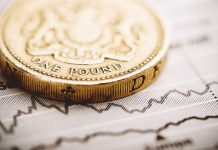After two consecutive weeks of falling versus the US dollar, the pound rallied higher in the previous week. The pound US dollar jumped over 1% higher, pulling itself back above $1.30 after touching a low of US$1.2696, its lowest level since August.
| What do these figures mean? |
|---|
| When measuring the value of a pair of currencies, one set equals 1 unit and the other shows the current equivalent. As the market moves, the amount will vary from minute to minute.For example, it could be written:1 GBP = 1.28934 USDHere, £1 is equivalent to approximately $1.29. This specifically measures the pound’s worth against the dollar. If the US dollar amount increases in this pairing, it’s positive for the pound. Or, if you were looking at it the other way around:1 USD = 0.77786 GBPIn this example, $1 is equivalent to approximately £0.78. This measures the US dollar’s worth versus the British pound. If the sterling number gets larger, it’s good news for the dollar. |
Brexit optimism and encouraging words from the Bank of England sent the pound rallying northwards in the previous week. Reports surfaced that the UK and Brussels had agreed a Brexit deal for the UK financial services, a crucial contributor to the UK economy. The report claimed that UK financial services companies could continue to operate in the EU as they do now, even in the case of a no deal Brexit. This would be a huge support for the UK economy, and as a result the pound rallied. It even managed to retain some of the gains, even as Theresa May’s office deny the reports.
The Bank of England (BoE) also offered support to the pound. BoE Governor Mark Carney lifted economic forecasts for the UK. Additionally, he said that interest rates may need to be raised faster than initially planned in the case of an orderly, softer Brexit.
| Why do raised interest rates boost a currency’s value? |
|---|
| Interest rates are key to understanding exchange rate movements. Those who have large sums of money to invest want the highest return on their investments. Higher interest rate environments tend to offer higher yields. So, if the interest rate or at least the interest rate expectation of a country is relatively higher compared to another, then it attracts more foreign capital investment. Large corporations and investors need local currency to invest. More local currency used then boosts the demand of that currency, pushing the value higher. |
Brexit will remain in focus as trading for the new week begins. 70 top business leaders signed a letter requesting a people’s vote for the Brexit deal that Theresa May has negotiated. They also warned that a disorderly Brexit would cause severe economic damage.
Investors will also glance across to the release of UK service sector activity data. Should service sector pmi read weaker than analysts expect, the pound could give up some of last week’s gains.
Non-Farm Payrolls Send Dollar Higher
The dollar was in demand across the month of October as investors sought its safe haven status amid rising geopolitical tensions. Geopolitical tensions have eased slightly in November, however, the dollar was still in favour as investors cheered a strong US jobs report.
The US non-farm payroll showed that 250,000 jobs were created in October in the US. This was ahead of the 190,000 analysts had been expecting, Furthermore, US earnings rose to the highest level since 2009, increasing 3.1% year on year in October. Overall these figures show that the US jobs market is extremely healthy offering a huge support to the US economy.
| How does the non-farm payroll (NFP) affect the US dollar? |
|---|
| It works like this, when there is low unemployment and high job creation, the demand for workers increases. As demand for workers goes up, wages for those workers also go up. Which means the workers are now taking home more money to spend on cars, houses or in the shops. As a result, demand for goods and services also increase, pushing the prices of the good and services higher. That’s also known as inflation. When inflation moves higher, central banks are more likely to raise interest rates, which then pushes up the currency’s worth. |
Today investors will focus on US non manufacturing data. Another strong reading from the US will cement a December rate rise, lifting the dollar higher.
This publication is provided for general information purposes only and is not intended to cover every aspect of the topics with which it deals. It is not intended to amount to advice on which you should rely. You must obtain professional or specialist advice before taking, or refraining from, any action on the basis of the content in this publication. The information in this publication does not constitute legal, tax or other professional advice from TransferWise Inc., Currency Live or its affiliates. Prior results do not guarantee a similar outcome. We make no representations, warranties or guarantees, whether express or implied, that the content in the publication is accurate, complete or up to date. Consult our risk warning page for more details.
This article was initially published on TransferWise.com from the same author. The content at Currency Live is the sole opinion of the authors and in no way reflects the views of TransferWise Inc.





